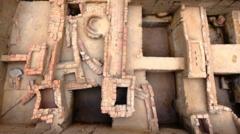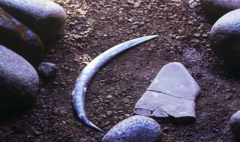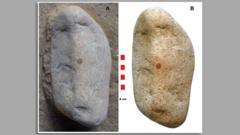Underneath the turf of a soccer field in the Simmering district of Vienna, archaeologists have made a remarkable discovery: a mass grave estimated to date back nearly 2,000 years, during a tumultuous period of the Roman Empire's confrontations with Germanic tribes. The find, announced recently, came to light during renovations conducted by a construction team back in October.
The team from the Vienna Museum, digging in response to local construction, unearthed the remains of at least 129 individuals. Initial analyses suggest these bones belong to a timeframe ranging from A.D. 80 to A.D. 234, a period marked by several Roman emperors, including Domitian and Trajan, who were embroiled in conflicts with the ancient tribes in this pivotal region.
Key artifacts that were excavated alongside the remains—such as an iron dagger, lance points, pieces of scale armor, and components of a Roman military helmet—concurrently supported the dating of the grave to this chaotic era. Further examination revealed shoe nails from caligae, a type of sandal worn by Roman soldiers, located near one of the skeletons, hinting at the military context of the burial site.
Such skeletal remains are exceptionally rare in Central Europe from this era, primarily due to the Roman practice of cremation predominating until the third century A.D. Michaela Binder, the chief anthropologist on the excavation team, noted, “For all of middle Europe from the first century, we don’t have any unburned, uncremated human remains. So aside from the military aspect, it is an absolute unique chance to study the life histories of people in the first century A.D.”
This discovery not only provides insights into the violent conflict that marked this period but also opens new avenues for understanding the lives of individuals under Roman rule, giving contemporary society a rare glimpse into its ancient past.



















